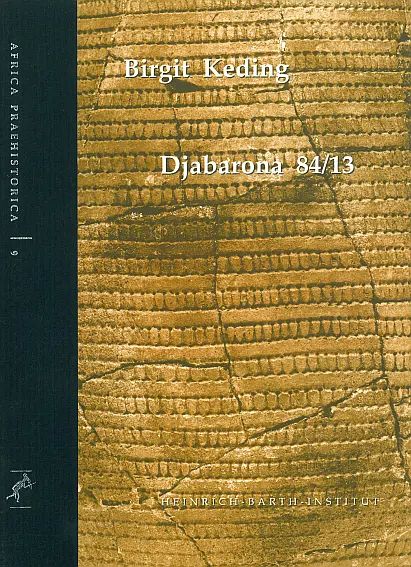- Autor/in:
- Author:
- Birgit Keding
- Erscheinungsjahr:
- Publication year:
- 1996
- Reihe & Band:
- Series & Number:
- Africa Praehistorica 9
- ISBN:
- ISBN:
- 978-3-927688-14-2
- DOI:
- DOI:
- 10.18716/hbi/ap09
- Preis:
- Price:
- 69 € Aktuell: 5 €
- 69 € Discount price: 5 €
Mit einer Länge von mehr als 1.000 km ist das Wadi Howar ein west-östlich ausgerichtetes Talsystem am südlichen Rand der libyschen Wüste. Es war einst der größte Nebenfluss des Nils und zeichnete sich bis vor zweitausend Jahren durch Abschnitte mit fließendem und stehendem Wasser aus. Über mehrere Jahrtausende hinweg war das Wadi Howar ein ökologisch günstiges Siedlungsgebiet für den Menschen und ein wichtiger Verkehrsweg zwischen dem Niltal und den inneren Regionen Afrikas. Davon zeugen zahlreiche prähistorische Stätten an den Ufern des Wadis, die besonders durch Keramik gekennzeichnet sind. Obwohl diese Stätten bereits von frühen Entdeckern wie Newbold, Shaw und Frobenius erwähnt wurden, begann eine systematische archäologische Untersuchung dieser immer noch schwer zugänglichen Region erst mit den Arbeiten des Kölner Projekts "Siedlungsgeschichte der Ostsahara" (gefördert durch die Deutsche Forschungsgemeinschaft) in den 1980er Jahren. Die Analyse dieser Arbeit stützte sich in erster Linie auf die Keramik des Fundplatzes Djabarona 84/13, der aufgrund seiner Größe und der großen Menge an Funden der bedeutendste Fundplatz der Region ist. Seine Befunde, insbesondere die über 1.000 ungestörten Grubeninventare mit reichlich Keramikmaterial und Tierknochen, boten eine hervorragende Grundlage für die Analyse. Seriationen, Verteilungskartierungen der Grubeninhalte sowie regionale und überregionale Vergleiche absolut datierter archäologischer Funde ermöglichten eine chronologische Einordnung.
With a length of more than 1,000 km the Wadi Howar is a west-east oriented valley system situated on the southern border of the Libyan Desert. It was once the largest tributary of the river Nile and, until two thousand years ago, was characterized by stretches of both running and standing water. Over several millennia, the Wadi Howar was an ecologically favourable area for human settlement and a highly important communication route between the Nile Valley and the inner regions of Africa. Evidence of this is given by numerous prehistoric sites located along the wadi banks which are particularly characterized by pottery. Although these sites were already mentioned by early explorers such as Newbold, Shaw and Frobenius, a systematic archaeological investigation of this still almost inaccessible region only began with the work of the Cologne project “Settlement History of the Eastern Sahara” (funded by: "Deutsche Forschungsgemeinschaft") in the 1980's. The analysis of this work was primarily based on pottery assemblages from the Djabarona 84/13 site, the most prominent site in the region due to its size and large quantities of finds. Its features, in particular over 1,000 undisturbed pit inventories with abundant pottery material and animal bones, furnished an excellent basis for the analysis. Seriations, mappings of the distribution of the pit contents as well as regional and supraregional comparisons of absolutely dated archaeological finds, all helped establish a chronological sequence for the use of the pits and the typological pottery development in the 3rd and 2nd millennia BC. The results of this analysis seem to indicate that the cattle-keepers who settled in the Wadi Howar probably originated in the Sudanese Nile Valley but that – contrary to previous assumptions – there was an increasing orientation towards the adjacent areas to the west, especially in the later phases of advancing aridity. However, not only the chronological subdivisions of the pottery but also the archaeozoological results and the economic and probably ritual structures that can be deduced from this analysis make Djabarona 84/13 a cornerstone for the understanding of the settlement history of the southern Eastern Sahara.

